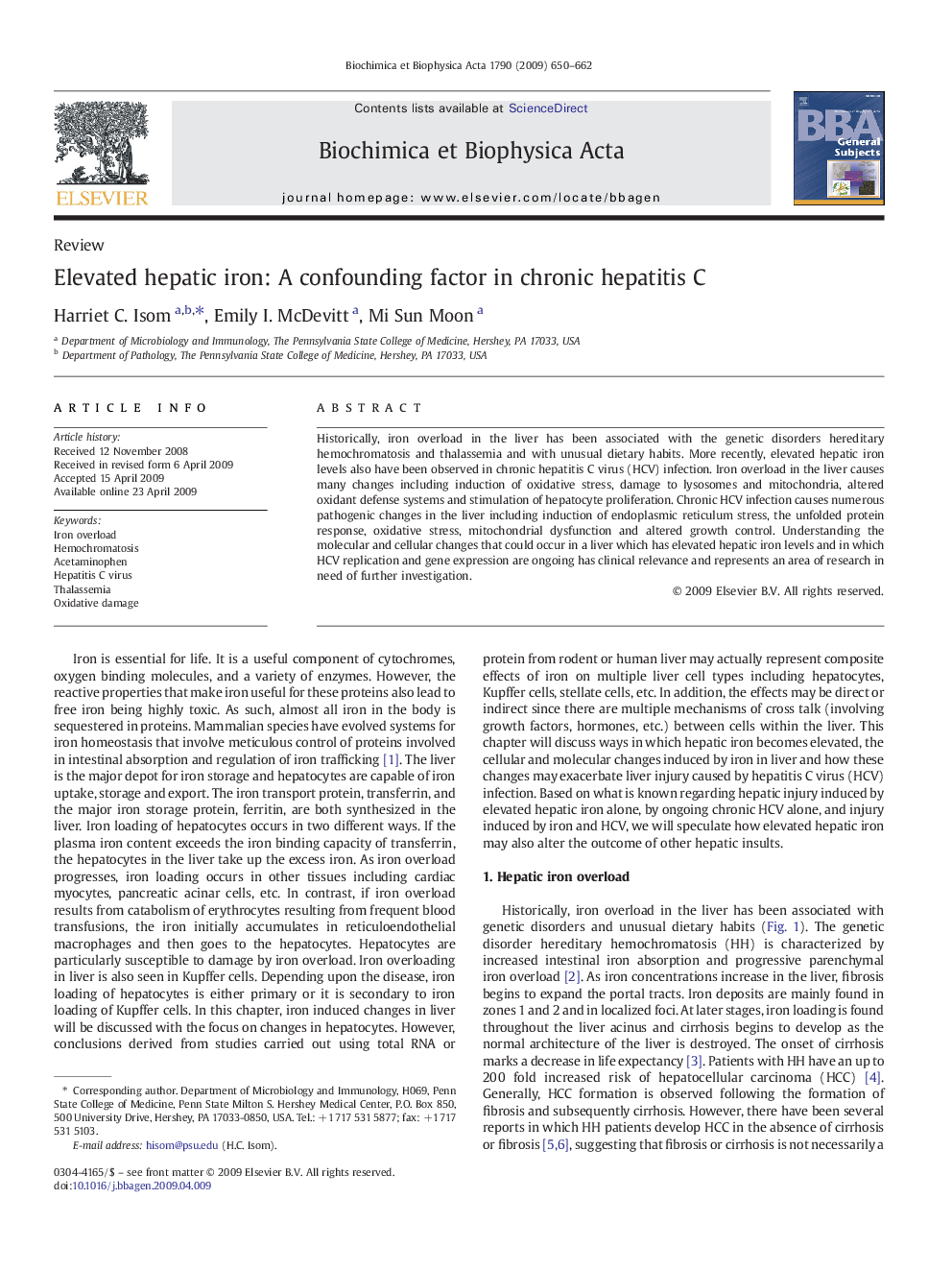| Article ID | Journal | Published Year | Pages | File Type |
|---|---|---|---|---|
| 1948191 | Biochimica et Biophysica Acta (BBA) - General Subjects | 2009 | 13 Pages |
Historically, iron overload in the liver has been associated with the genetic disorders hereditary hemochromatosis and thalassemia and with unusual dietary habits. More recently, elevated hepatic iron levels also have been observed in chronic hepatitis C virus (HCV) infection. Iron overload in the liver causes many changes including induction of oxidative stress, damage to lysosomes and mitochondria, altered oxidant defense systems and stimulation of hepatocyte proliferation. Chronic HCV infection causes numerous pathogenic changes in the liver including induction of endoplasmic reticulum stress, the unfolded protein response, oxidative stress, mitochondrial dysfunction and altered growth control. Understanding the molecular and cellular changes that could occur in a liver which has elevated hepatic iron levels and in which HCV replication and gene expression are ongoing has clinical relevance and represents an area of research in need of further investigation.
